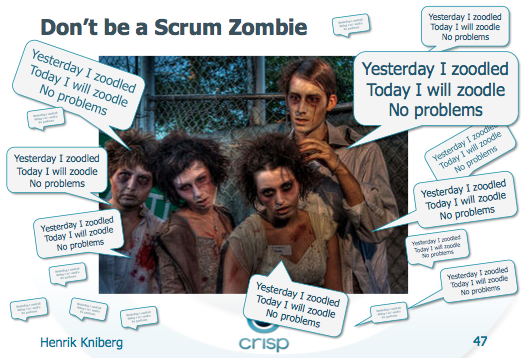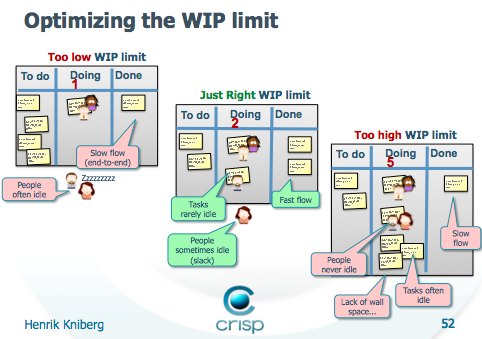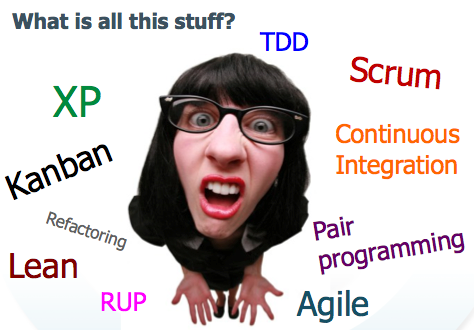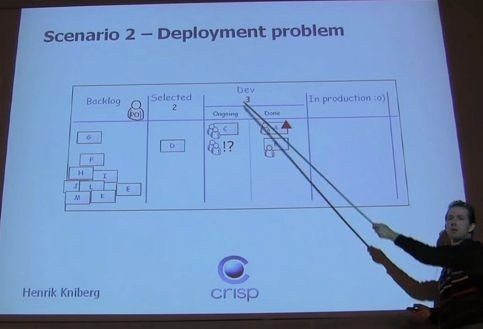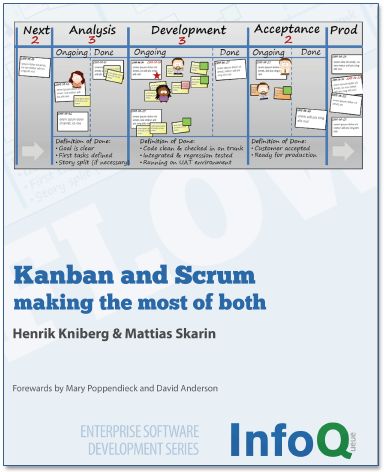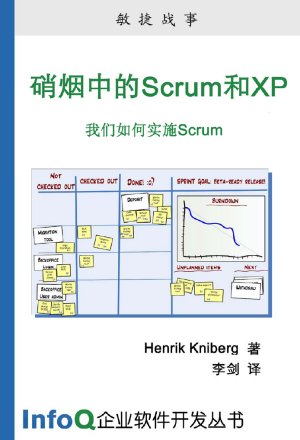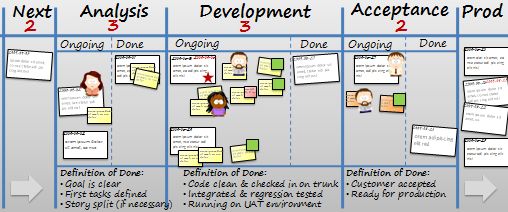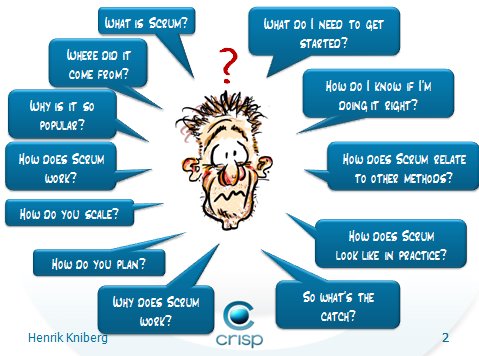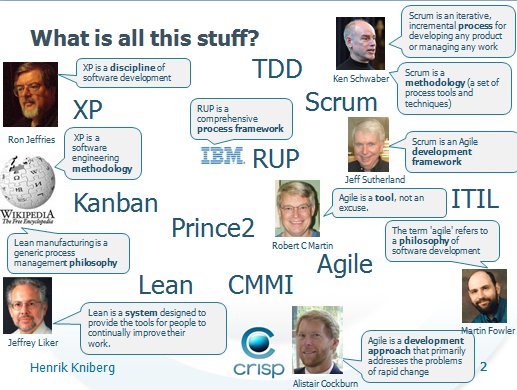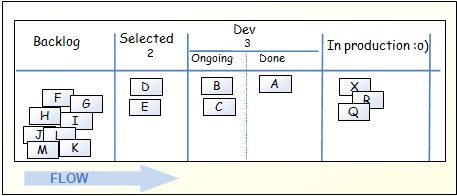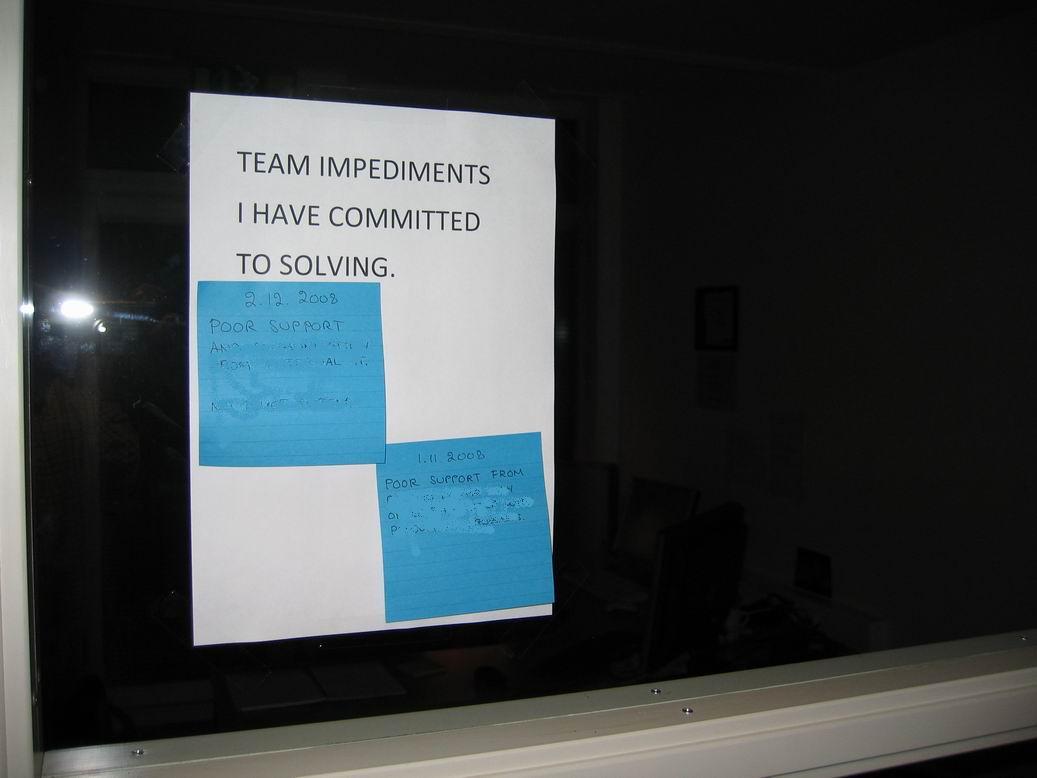Here are the slides from my keynote at the Scrum Gathering in Cape Town. What to do when Scrum doesn’t work – PDF What to do when Scrum doesn’t work – Powerpoint What to do when Scrum doesn’t work – Article Positive atmosphere and lots of laughs, really enjoyed the audience! The whole topic felt
Continue readingKanban for Scrum practitioners
Here are the slides from my deep-dive workshop at the Scrum Gathering, Cape Town: Kanban for Scrum practitioners, PDF format Kanban for Scrum practitioners, Powerpoint format Thanks for attending! Lots of interesting questions and insights came up during the workshop. Sample slide:
Continue readingKanban and Scrum – making the most of both
Here are the slides for my session Kanban and Scrum – making the most of both at Agile 2010, Orlando. Thanks for participating! Slides in PDF format – if you don’t have powerpoint Slides in Powerpoint format – if you want the animations Translations: Japanese slides in Powerpoint format (thx Kiro Harada) For those who
Continue readingThe Essence of Agile
Here are the slides from my keynote "The Essence of Agile" at Agile Spain 2010, Madrid. Basically a whole week’s course compressed into a one hour lecture, worked out even better than I had hoped :o) Impressed by the turnup, 300 people is good for being the first agile conference in Spain!
Continue readingJapanese translation of ‘Kanban and Scrum – making the most of both’
My book "Kanban and Scrum – making the most of both" is now available in Japanese. Good work Hiroki Kondo & Midori Daida!
Continue readingLean and Scrum events next week
Next week is full of interesting and fun events! Mary Poppendieck, Tom Poppendieck, and Jeff Sutherland are doing the following events with me in Stockholm: Monday – Tuesday: Certified ScrumMaster course Tuesday evening: Introduction to Lean Software Development Wednesday: Deep Lean The events are all fully booked but you can still register and get on
Continue readingEmo-lines
If you coach a scrum team but you’re not around to observe them during the sprint, how do you know how they felt about it?
Use Emo-lines
Scrum Checklist translated to Russian, Japanese, German, and Portuguese
I’m happy to say that my Scrum Checklist has been translated to several languages: Russian (thanks Alexander Plutalov) Japanese (thanks Yasunobu Kawaguchi) German (thanks Marc Bless) Portuguese (thanks Demetrius Nunes)
Continue readingInterviewed on Agile Zone about Kanban and Scrum and XP
I was interviewed by Mitch Pronschinske on Agile Zone, this turned into two articles: Kanban isn’t better than Scrum, it’s just smaller Scrum and XP are new – their principles are not I think Mitch did a good job of turning the interview into coherent articles (not an easy job).
Continue readingKanban vs Scrum video in Swedish
Here’s a video recording of my 10 minute lightning talk "Kanban vs Scrum, a practical guide" at Agila Sverige June 8, 2009. It is basically a 10 minute summary of my book "Kanban and Scrum – making the most of both". NOTE – the recording is in Swedish.
Continue readingKanban and Scrum – making the most of both
My new book "Kanban and Scrum – making the most of both" is done! The purpose of this book is to clear up the fog, so you can figure out how Kanban and Scrum might be useful in your environment. The book includes: Foreword by Mary Poppendieck Foreword by David Anderson Updated version of my
Continue readingTraditional Chinese version of Scrum and XP from the Trenches
Here’s a Traditional Chinese translation of my book Scrum and XP from the Trenches (not same as Chinese translation). Thanks Ko Jen-Chieh! The other 8 translations are listed on the InfoQ page for the book. Feel free to email me (henrik.kniberg AT crisp.se) if you want to translate the book to your language.
Continue readingKanban and Scrum – a practical guide
Here the the slides from my presentation "Kanban and Scrum – a practical guide" from QCon in San Francisco today. The presentation is mostly pictures. If you are curious about what I was saying, check out the free online book “Kanban and Scrum – making the most of both”. Great feedback! 77 green notes, 7
Continue readingWhy cycle time can tell you more than velocity
Take a look at this chart and tell us how we are doing?
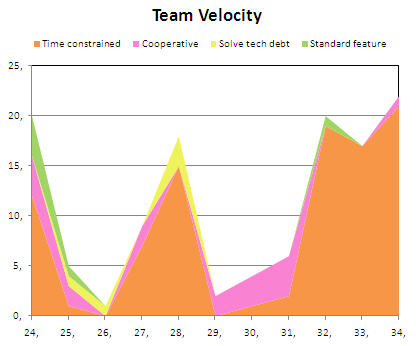
represents different categories of work.
This problem gets accentuated as we try to plan releases. If we went on and made a made a release plan based on this velocity, what predictability can we expect?
Stop runaway meetings with the timeout sign
 Sometimes it is hard to stop a running meeting. You might have someone so fond of talking he doesn’t realize time is up. Or the daily stand up has gone haywire. How do you break in, politely?
Sometimes it is hard to stop a running meeting. You might have someone so fond of talking he doesn’t realize time is up. Or the daily stand up has gone haywire. How do you break in, politely?
Teach everyone the timeout sign.
"hey, let me get back to code" 🙂
Continue readingYour Scrum is running fine, right?
Your team is coding along, sprints are passing by, your somewhere around sprint 15.. life is ok.. ..or?
As a famous test leader once said:
"Team are happily completing sprints but nothing gets’s done"
Here are a couple of things to look out for in your Scrum organization..
Continue readingIt is not the process, it’s the improvements
For those of you who wonder "why would anybody convert a Scrum team to Kanban" (see earlier blog) – it is important that you understand the true intent. (..yes there is one! 🙂 What expected output do you have from a process framework?
This important "why" question is often left out in the debate. The heated "Scrum vs Kanban" discussion is a good example. Try yourself "why are you using Scrum"? (or Kanban). At what point would you throw the tool out for not delivering?
It is no wonder debates turns heated if we disagree on where we are heading. But if we instead start with clarifying intent ("why") – then the actual choice of tools becomes less important (more like a boring context summary 🙂
Why then? How do you know that the process tool works for you?
- First (obvious) – it helps you deliver running software.
- Second (less obvious) – it makes you do continuous improvement effectively
If you are getting results from continuous improvement – your tool is right. If it is not happening, it is probably wrong. (check yourself, what improvements have you benefited from lately?)
This was the main reason I chose to implement Kanban in the Scrum teams. It was not because the sprints where not delivering, it was because the improvements didn’t happen.
Continue readingScrum Checklist – version 2.0
Check out Scrum Checklist version 2.0!
Continue readingScrum intro
Here are the slides for my 90 minute session "Introduction to Scrum" at Agile 2009 in Chicago in a couple of weeks. The slide deck is mostly pictures and intended primarily for presentation use, not reading. So this stuff will probably make most sense if you attend the session.
Continue readingThe Thinking Tool called Agile
Here are the slides from my keynote at Integrating Agile 2009, Amsterdam. First three slides are below, the rest are in the PDF document. Take-away points: Know your goal Agile is a tool, not a goal Tools don’t fail or succeed. People do. There is no such thing as a good or bad tool. Only
Continue readingRelease and project burndown tracking
Sometimes I work in projects where team uses sprints, but deliverables are compiled over multiple sprints. In these cases, I have found it handy to do simple Release / Project burndown tracking. It helps facilitate a discussion with client and project stakeholders.
So, here is a template I use. It has the feature of "dropping" the baseline when additions to the projects are made, showing the net effect of things discovered along the road.
It can be used by a Kanban team, Scrum team, well – any team 🙂
Project and Release Burndown Template.xlxs
Project and Release Burndown Template.xls
Sprint planning checklist
I use this in my own head when I visit a sprint planning. So why not share it 🙂
- Do all team members understand the meaning of the story?
- Is the definition of done clear?
- Do all team members understand how the solution intends to solve the problem?
- Is the story broken down to a level so that team can cooperate around solving it?
- Is there a high cost of failure such, we need do address risk?
- Are stories related to outside parties in such a way this needs to be cared about?
- Is there a last responsible moment at which we can’t roll back?
Requirements Specification is Waste
Eclipse trashed some code for me today and I had to recreate the workspace. On such days, I can get a bit edgy and maybe I was, when commenting Richard Kronfält’s blog on Scrum and traditional QA.
Sorry about that, Richard, but you are a viking so I guess I can get away with a glass of mjöd if I ever bump into you.
But my point is still, requirements specification is waste. It follows from that the issue tracking is as well. Well, not always.
Continue readingKanban vs Scrum – slides
Here are the slides for my presentation Kanban vs Scrum. I’m glad people enjoyed it! The participants were asked to rate how valuable the presentation was on a scale 1-3. The average rating was 3.0 at Deep Lean and 2.9 at Future of Agile :o) This presentation is based on my Kanban vs Scrum article,
Continue readingDeep Lean 2009
Are you interested in Lean software development and how this relates to Agile methods such as Scrum and XP? Would you like to meet Mary Poppendieck (leading pioneer of Lean Software Development) and Jeff Sutherland (creator of Scrum)? Deep Lean on May 18-19 is your chance to go beyond the basics, to meet and interact
Continue readingFuture of Agile – update!
The schedule is taking shape for May 27:th, we now announce two more sessions:
- Kanban vs. Scrum – Henrik Kniberg
- Roots of Lean and Agile – direct report from Toyota visit
Also, meet the experts face2face in the afternoon open space session. Here is your chance to discuss in person with the father of Kanban, David Anderson and with Henrik Kniberg.
More is to come. Seats are limited. Don’t miss out.
http://www.crisp.se/futureofagile
Kanban vs Scrum
There’s a lot of buzz on Kanban right now in the agile software development community. Since Scrum has become quite mainstream now, a common question is “so what is Kanban, and how does it compare to Scrum?” Where do they complement each other? Are there any potential conflicts? Here’s an attempt to clear up some
Continue readingGerman version of Scrum and XP from the Trenches
A German translation of my book Scrum and XP from the Trenches is now available. Thanks Robert Sösemann & Andreas Schliep! Russian, French, Spanish, Japanese, Chinese, and Portuguese translations are also available. Korean, Italian, and Slovak translations are underway. I never cease to be impressed by the agile community! So far, every time I’ve blogged
Continue readingGetting management involvement in Scrum
When running Scrum (or Kanban), you will need management involvement. And it is actually better that you secure it from the start.
| Don’t get me wrong – I am not advocating detailed control and interference. No, what I am talking about is getting some punch behind dealing with impediments that your team will surface. | 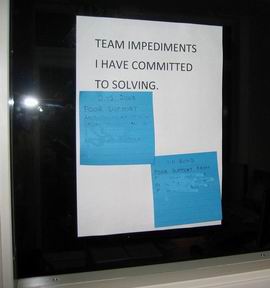 |
How do you scale projects?
When I have worked with scaling Scrum over several teams (up to 10 in parallell), I have strived to strengthen the same processes that gives traction to a single team.
Alistair Cockburn compiles this beautifully in his Software engineering in 21:st century
People issues determining a projects speed
- Can they easily detect something needs attention? (Good at Looking Around)
- Will they care enough to do something about it? (Pride-in-work; Amicability)
- Can they effectively pass along the information? (Proximity; face-to-face)
